I was delighted to discover that my CD of 100s of pictures, taken before my recent hospital adventure, would work – but only on a computer other than my own! Great fun to see these pictures, of recent training in crop-livestock-tree techniques with smallholders and technical staff in several areas of the country, as well as of pictures of happenings around here by Lake Tanganyika.
The last training session that I gave was with the technical staff of the NGO Lutheran World Service (LWF) and included government counterparts, research and extension, in participatory work with smallholders in an area of the country where LWF-assisted refugees are returning from Tanzania.

While low-lying areas have a certain amount of moisture, most of this region is low brush, with trees and bamboo dotting the area. This region of eastern Burundi is considered semi-savannah.
Compared to the rest of the country, it is more impoverished both in terms of its agriculture-livestock-tree activities, as well as in terms of the people themselves. The majority are Hutus who have suffered through various ethnic clashes during past years.

Refugees who have been living in refugee camps in eastern Tanzania – some for many years – returning to the project area in Burundi to an uncertain life.
A major concern was to work with locals in identifying the problems and opportunities as they saw them – and to learn about what they found grew well (and not), and what were the wild or semi-protected species that were gathered and used.
Another goal was to diminish the desire of agronomists, livestock workers, foresters, etc. to simply come in and begin providing planting materials or livestock that are simply not relevant for local needs or wider food security. For example, there was a push by some project technical staff and government partners to provide planting materials for Irish potatoes – nice food crops for urban areas, but they are not eaten in the area of the training, nor are cultivation methods widely known. In addition, marketing out of the region would be almost impossible.

On market day, all produce must be taken by hand – or on one’s head. This means a two-hour walk, one way, in the area we were working
Similarly with livestock, introducing highly crossbreed cattle and goats are not a good bet. They simply can’t survive in this area unless cared for by those who can afford the medications and feed necessary to address the health and nutritional requirements of ‘improved’ breeds. In short, better to have a scrawny, small cow (or goat) that lives a long time with little input, that a lovely fat cow (or goat) that dies during the next rainy season from theileriosis or other tropical diseases.

In the refugee camps in Western Tanzania, families were assisted to obtain livestock – most of which were improved breeds requiring regular medical input. This was possible, given the presence of vet assistance in the camps. These livestock were moved with the refugees (as here) to Burundi. However, in Burundi the vet resources are few or nonexistent in areas to which most refugees returned and due to continued illness or death many wanted to sell their stock in order to buy local (indigenous) breeds.
What farmers really wanted were crops and animals with which they were familiar, that were appropriate for agro-ecological conditions in the area, and that would – above all – satisfy their own food and local income needs. This is a region of the country that continually suffers droughts, generally followed by mild to severe famine, and is also remote from the rest of the country.

Driving down into Ruyigi Provence where commercial cropping (generally organized by merchants, I am told) of beans is being carried out on the hillsides for lack of bottom land. Extensive destruction of landcover, including brush, tree, bamboo plants, together with extensive runoff, is the result.

A local, Central African Goat (indigenous breed) does very well in Burundi. Low worms and Tick-borne diseases compared to ‘improved’ breeds.
Multiplication of disease-free manioc and sweet potatoes were both favored, and this has been taking place. Sorghum is widely grown, but is not favored as a crop by researchers or technical staff in the country – much to the demise of the growers. In addition to a food crop, it is also an important crop for making traditional beer, which continues as a key income-earner for women. Maize is grown, although it must be restricted to areas of relative wetness and even so, frequently withers away in the dry conditions.

Multiplication of resistant cassava cuttings with land donated by the local government
As for wild fruits and vegetables, I asked technical staff and colleagues to go with local farmer counterparts to collect specimens from the area, noting areas of growth, who gathered and processed, how they were used, etc. The amount of items brought back really astounded all of the Burundians:

Several of the plants that are collected, especially during the drought periods. Initial results for wild plants survey; interestingly, sweet potato leaves are so-considered.
I intended to put together a little proposal with LWF to follow-up on these preliminary and rather haphazard results on wild foods – which given the drought-prone conditions of the region are important. But alas! health problems intervened and since returning from the hospital I’ve still not recovered enough sight or ability to work in the light (daylight) to be able to continue this interesting activity. Hopefully in a few months.

Meetings of all participants were held here, and each team – of which in this exercise there were 8 – went off to discuss and collect data on specific topics
Some of the other exercises included the following.

Multiple uses of the sorghum plant – this was a revelation to some of the city-based participants, who had no idea the extent to which the different parts of sorghum are used. Months of high labor input. Months of planting major crops

Topographical plan of a shamba (farm) showing major features

Periods of harvesting major crops
There were several other exercises, which I won’t include in this blog. All of the results were discussed both in village meetings and back in the home office, in order to develop future activities using these data as a base. At the end of the training, as always, participants were given certificates and a group photo:

End of the training sessions – always a group photo
The value of this kind of group training, incorporating farmers with technical persons, can be considerable in building local confidence and the ability of staff to work together as well as with technical colleagues in government institutions in seeking solutions to local crop, tree and livestock problems as well as in promoting opportunities. An early article that I wrote on the topic of Rapid Assessments is the following :
Problem Areas in PRA and Related Methodologies

A group of Burundian women in Karusi Provence receiving goats, which provide a social safety net for families. Source: Wikipedia.
Related articles
- Experts warn rapid losses of Africa’s native livestock threaten continent’s food supply (eurekalert.org)
- Spatial Patterns of Land Use Change (jacobam.wordpress.com)





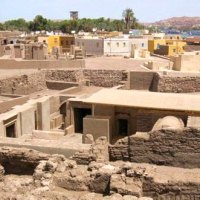
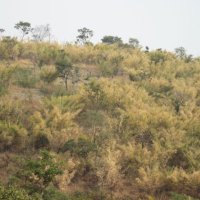
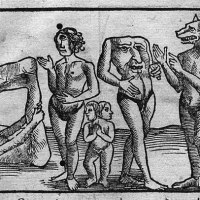

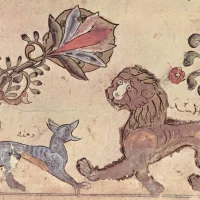
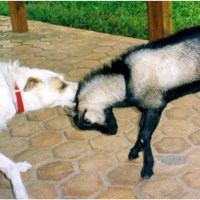















Pingback: Agriculture; Livestock; Indigenous Plants; Agroforestry – Links | DIANABUJA'S BLOG: Africa, the Middle East, Agriculture, History & Culture